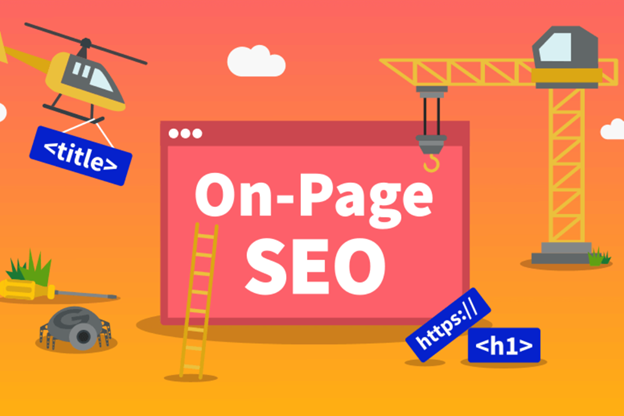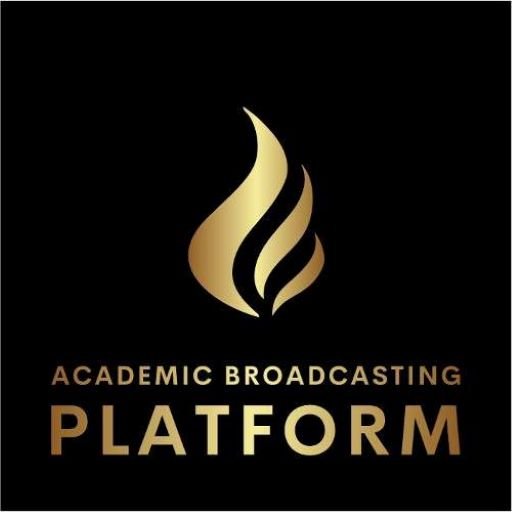Know the most important on-page SEO techniques you need to master for optimizing content, improving ranking status, and great traffic conversion.
On Page SEO – What It is and How to Do It: Details SEO Guidelines
SEO is indeed one of the most crucified channels of digital marketing. On-page SEO was one of the greatest types of deadly and effective caption types of SEO. Today, this tutorial will bring you up to date with on page SEO – what it is and how to do it.
1. Definition of On-Page SEO
On-page SEO is the technique of optimizing a particular web page with respect to search engines and bringing organic traffic. Simply put, it’s optimizing that web page to try making it search engine aware through tweaking content, HTML source codes, and overall user experience for search engines and users.
On-page SEO is all about those things that one can do within one’s four walls because all off-page optimization has to refer to external factors like backlinks and social signals. Hence, this becomes an essential aspect of any holistic SEO strategy.

2. What Makes On-Page SEO Vital?
- Raises page ranks in search engines: The on-site SEO lets the search engines understand what is on the web page.
- Enhances experience of users: A perfectly optimized page is likely to satisfy both search engines and the users for very fast load times, very engaging content, and easy navigation, which all keep users on your site without bouncing.
- Improves organic traffic: The more a site rises on the ranking, the more visibility, which translates to more organic traffic. Organic traffic is economical and thus makes it one of the most precious visitors from the website.
- Justifies algorithm changes: Search engines are constantly updating algorithms in order to favour user-centric content. On-page SEO ensures that your website is always fresh and made relevant for those changes.
3. Key Elements of On-Page SEO
Here are the most essential elements that make a good on-page SEO:
3.1. Title Tags
What is a title tag? Well, it is HTML denoting a title tag, which is attached to a particular page. It’s this title that gets displayed as a clickbait headline in search engine results, and crucially attracts the user’s attention. It improves visibility and click-through rates (CTR) when written well.
Best practices:
- Ensure the title is under 60 characters to display fully in search results.
- Prioritize placing the main keyword at the start of the title.
- In addition, ensure the title is unique, relevant to the content, and compelling to increase clicks.
3.2. Meta Descriptions
Meta descriptions are usually just under 150-160 words that briefly summarise a page but these are not really related to the ranking of a page. They are formed mainly for a preview to the users concerning what he or she is likely to find on such a page in order to enhance the click-through rate.
Best practices:
- Craft meta descriptions of 150-160 characters, ensuring full visibility in search results.
- Add primary keywords naturally into the description.
- Another part that a Call to action consists in definitely prompt users to click through to your page.
3.3. Headings
Information is organized in headings, making it more comfortable and efficient to read by users and search engines. The H1 tag is typically the main title header of the page, and H2 or H3 will separate other subtopics and sections.
Best practices:
- Use only one H1 tag per page to clearly the primary topic.
- Ensure that headings are keyword-rich, but don’t overstuff them.
- Arrange headings logically to guide users through the content and enhance readability.
3.4. URL Structure
Clearly, an easy-to-understand URL makes for an SEO-friendly site, and thus better for the user as well. Research has shown that URLs that are easier understood lead to higher rankings and are more easily spent by users throughout the site.
Best practices:
- Keep URLs short and simple, ideally under 100 characters.
- Your URL must have the main keyword.
- Use hyphens (e.g., “www.example.com/on-page-seo-guide”) to separate words, making it easier to read.
3.5. Content Optimization
Creating high-quality, well-optimized content is part and parcel of successful on-page SEO driving content traffic. Its relevance, value, and fulfilment of user intent will enhance the chances of drawing traffic and engagement.
Best practices:
- Ensure your content fits with user intent and provides valuable information.
- Add keywords naturally into the content without keyword stuffing.
- Also, here are some terms and synonyms that relate to each other to improve the semantics of your page in SEO.
- Embrace the use of bullets, visuals, or even a video or two to create some attractive reader content.
- In addition, try to keep a content volume ranging anywhere from 1,000 words for short to about 2,500 words for longer subjects.

3.6. Keyword Usage
Strategic keyword placement provides a great chance for a higher ranking by search engines that have an understanding of the topic of your particular page.
Best practices:
- Place the primary keyword within the first 100 words of the content for better relevance.
- Include keywords in headings, meta tags, and throughout the content, but maintain a natural flow.
- Optimize for long-tail keywords to capture more specific search queries.
3.7. Internal Linking
However, while facilitating navigation of the website and search engine crawling and indexing of the content, they link two web pages within the website. It lessens the bounce rate and provides a better experience for users.
Best practices:
- Use descriptive and relevant anchor texts in linking to other pages of your site.
- Create a logical hierarchy in the links so that important pages are easier to reach.
- Avoid overloading pages with internal links since it may confuse users and search engines.
3.8. External Linking
Adding authoritative external links with relevancy can boost the credibility of your content as well as give your readers additional value. For example, when building a traveling website, some external links to reputable websites will be good for your website on-page.
Best practices:
- Use external linking acidly and prudentially, when it really matters to the content.
- Ensure that the sources you link to are trustworthy and of high quality.
- Also, use descriptive anchor text to clearly communicate the relevance of the external link.
3.9. Image Optimization
However, those images images are worth it, as they will beautify your site. The only bad thing is improper optimization, which slows the page load time and incessantly affects the user and SEO performance.
Best practices:
- Compressed images help to reduce file size without compromising quality, so improve page speed.
- Use as descriptive a title as possible for image files (e.g., on-page-seo-checklist.jpg) to optimize search engine ranking.
- Furthermore, add alt text describing the image with relevant keywords in the context of improving accessibility and search engine optimization.
3.10. Mobile-Friendliness
The optimization on mobile devices guarantees that the user experiences a smooth experience irrespective of the devices.
Best practices:
- Responsive designs appropriate all screen sizes and types of devices.
- Make use of tools like Google’s Mobile-Friendliness Test for checking mobile usability for your website.
- Also, do not forget to size up buttons and links for easy tapping on mobile devices.

3.11. Page Speed
Page speed is a critical ranking factor and a major element of user experience. A fast-loading page helps retain visitors and improves SEO performance.
Best practices:
- Firstly, utilize techniques to lessen the number of HTTP requests and decrease the number of items that require a load.
- The loading times for users worldwide shall be enhanced through a content delivery network (CDN).
- Optimize CSS, JavaScript, and image files by keeping them smaller and achieving faster loading times.
3.12. Schema Markup
Structured data is schema markup that helps search engines comprehend the content within your page. It can improve your search results through enhanced rich snippets that showcase ratings, reviews, and event times.
Best practices:
- Implement schema markup types that are relevant to your content, such as articles, recipes, or reviews.
- In addition, use tools like Google’s Structured Data Markup Helper to create and implement structured data effectively.
4. How to Implement On-Page SEO
Here are step by step to implement on-page SEO for your website.
4.1. Step 1: Keyword Research
The first step to effective implementation of on-page SEO would be identifying the right keywords. Getting the lists of terms and phrases your targets are searching for allows you to source these trends into your content.
Get the tools, including Google Keyword Planner, Ahrefs, or SEMrush to find high-volume, low-competition keywords that go with your content. Be sure to pay attention to both short-tail and long-tail keyword phrases since they target different journeys along the direction of your market and would increase the chance that you are ranking for a variety of different searches.
4.2. Step 2: Analyze User Intent
User intent signifies the ultimate goal that lies behind a search query undertaken by a user. Understanding user intent is crucial before optimizing any content because what the user intends when typing various keywords in search of would tell the kind of content that needs optimization. The contemplation made on such user intentions basically leads to three types:-
- Information: The user just seeks an answer or information (e.g. “what is on-page SEO?”).
- Transactional: The users want to buy or perform some tasks (e.g. “Buy workout clothes online”).
- Navigational: The user intends to find a particular website or page (e.g., “Facebook login”). Craft now your content to meet user intention, be it all comprehensive information, which answers to problems, or even the marketing of products and services.

4.3. Step 3: Audit Existing Content
Take a good look at your existing pages and content to find deficiencies or possible areas of improvement. Usually, an audit reveals underperforming pages, outdated information, and areas to create new content to fill in the gaps.
Some tools to mention are Screaming Frog, Google Search Console, and other SEO audit tools. It disclosed what needs to be adjusted, like page load speed, keyword optimization, meta tag usage, etc.
4.4. Step 4: Optimize Content and Meta Tags
Having identified relevant keywords and safeguarded them through content analysis, it is finally time to complete the process by optimizing page content and meta tags for both search engines and human users.
Such that the primary keywords would appear naturally in title tags, meta descriptions, headings (H1, H2), and throughout body content without destroying the balance between keyword use and readability since over-optimization would end up impairing the user experience.
So, do read diligently to know how to write effective meta descriptions, construct more user-friendly URL structures. Also, add impacts on content readability with bullet points, images, and internal links-with all these.
4.5. Step 5: Test & Monitor Performance
After performing on-page SEO enhancements, you should first test and observe your page performance. Check your ranking and CTR, bounce rates, and other relevant details using Google Analytics, Google Search Console, Ahrefs, etc. Thus, this analysis will help show how effective the on-page SEO efforts have been. On a regular basis, keep monitoring KPIs so that you can support your data and make further optimization and improved SEO strategy decisions.
4.6. Step 6: Update Content Regular
Search engine optimization cannot be a one-time affair, and updating your content regularly is necessary to ensure that your website remains competitive. Current, valuable information is one of the main considerations that search engines visit sites with, so maintaining an active content strategy is fundamental.
Review and refresh older posts; update statistics and information, do away with outdated content. In addition, continued provision of up-to-date content will go a long way in keeping your pages relevant in search rankings over time, bringing continuous traffic.

4.7. Common Mistakes To Avoid
- Keyword stuffing makes your content penalized: Putting continuous keywords in your content means you might be punished.
- Neglect mobile optimization: An unfriendly to mobile site can contribute more rankings loss. So, try to use mobile friendly plugin.
- Ignoring internal links: Internal linking poor, brought low efficiency crawl and user interaction. So, it is important to use perfect internal linking for each blog. If those keywords are not appropriate, try to avoid do internal linking.
- Slow page load times: Frustrated users and drop rankings because of speed issues.
- Duplicate content: The same content should not be on two pages place. Also, never use same content in 2 different websites. Because it is hard for google to understand which article is original. So, google might penalized you for same content articles.
5. Conclusion
That’s all about on page SEO – what it is and how to do it. The on-page SEO forms an integral part of any digital marketing strategy. The proper on-page optimization could do wonders for your organic search engine ranking, get you traffic from search engines, and give your website an excellent overall experience.
On-page optimization is not a moment’s effort but a continual process. Keep performing regular monitoring of site performance, listening to algorithm changes, as well as ongoing optimization to stay in the race. Indeed, having the proper on-page SEO strategy would turn your website into a business growth machine.










